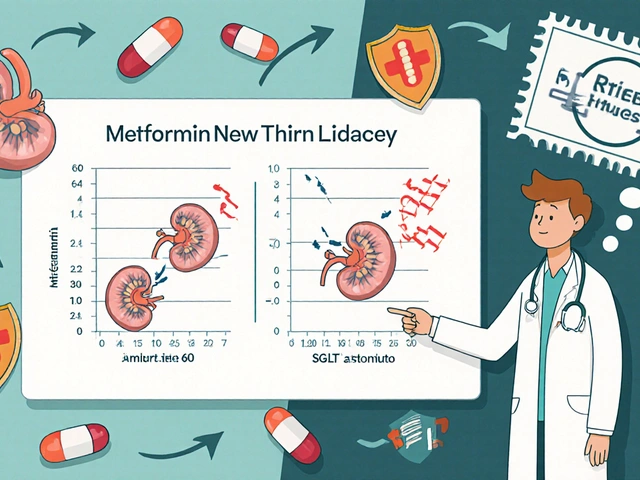Zyrtec-D: What It Is, How It Works, and What You Need to Know
When you’re dealing with stubborn allergies and a stuffy nose, Zyrtec-D, a combination medication that pairs the antihistamine cetirizine with the decongestant pseudoephedrine. Also known as cetirizine/pseudoephedrine, it’s one of the few over-the-counter options that tackles both runny nose and nasal congestion at once. Unlike plain Zyrtec, which only blocks histamine, Zyrtec-D goes further—clearing blocked sinuses so you can breathe easier. It’s not just for seasonal allergies either. Many people use it during colds, sinus infections, or when pollen counts spike in spring and fall.
But Zyrtec-D isn’t for everyone. The pseudoephedrine part can raise blood pressure, make you jittery, or keep you up at night. If you have high blood pressure, heart issues, or trouble sleeping, it might do more harm than good. That’s why some people switch to plain cetirizine (Zyrtec) or try alternatives like loratadine-pseudoephedrine (Claritin-D) or fexofenadine-pseudoephedrine (Allegra-D). Each has slightly different side effects, durations, and how well they work for individual bodies. And while Zyrtec-D gives fast relief, it’s not meant for long-term daily use—especially without checking in with a doctor.
What you’ll find in the articles below are real-world stories and science-backed comparisons. You’ll see how cetirizine, the antihistamine in Zyrtec-D that reduces sneezing, itching, and runny nose stacks up against other antihistamines like loratadine and fexofenadine. You’ll learn how pseudoephedrine, a decongestant that shrinks swollen blood vessels in the nose can help—or hurt—depending on your health history. And you’ll get clear advice on when to choose Zyrtec-D, when to avoid it, and what to do if you can’t get it (thanks to behind-the-counter restrictions).
Some of the posts here dig into how medications like Zyrtec-D interact with other drugs—like blood pressure pills or antidepressants. Others explain why some people feel wired after taking it, while others feel nothing at all. There’s even a look at what happens when you switch from brand to generic versions. This isn’t just about one pill. It’s about understanding how your body reacts to combinations of active ingredients, and how to make smarter choices when your nose is clogged and your eyes are itchy.






